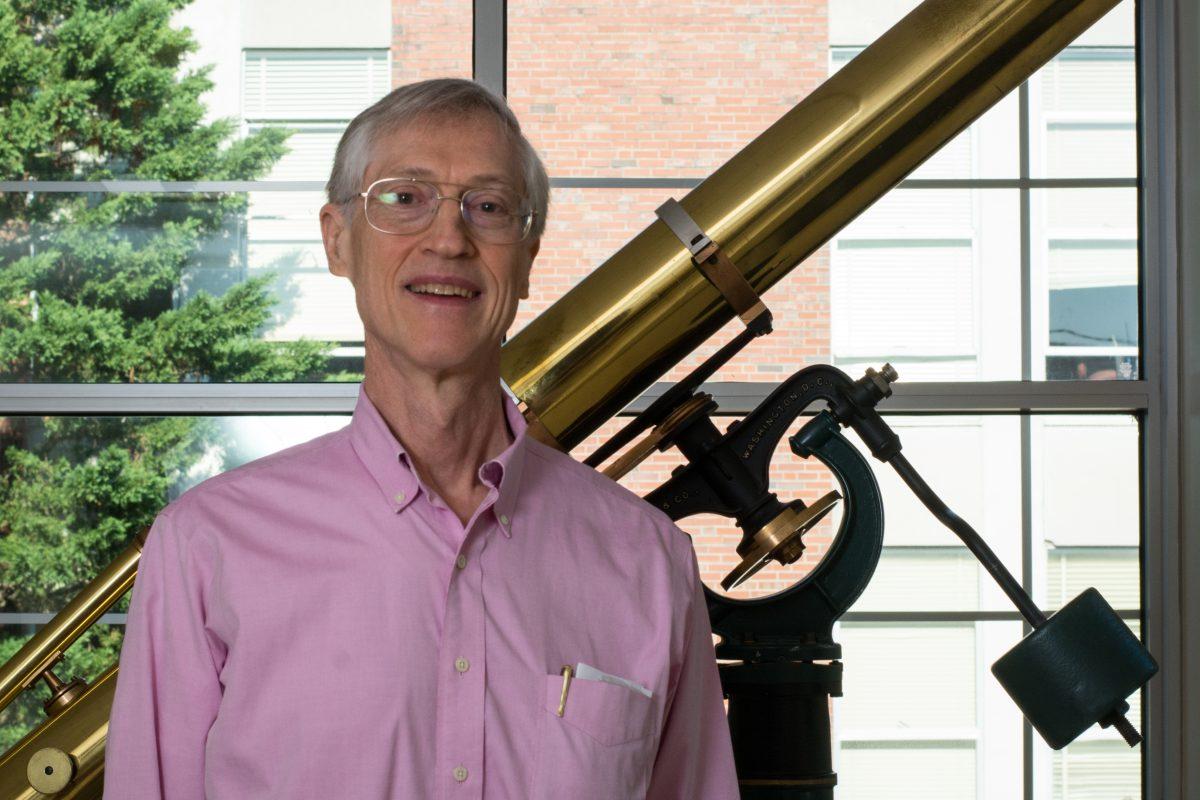When John C. Mather, the 2006 Nobel Laureate in physics visited N.C. State on Thursday, he sat down with the Technician to talk about his work on the James Webb Space Telescope, a telescope with the capabilities to capture infrared wavelengths and the Hubble Space Telescope’s successor. Due to space constraints, the questions and answers have been edited for length. Here’s some of what Mather said:
Q: As a prominent scientist with NASA, what are your thoughts on the privatization of the space industry?
A: So far what we really think of as privatization is that companies are really taking the risk of developing rocketry on their own nickel and then selling their service to NASA. So we now have contracts with SpaceX and Orbital to get our payloads up to the Space Station. It used to be that NASA told our contractors what to do and how to do it. And we’ve backed away from that because companies are able to do that on their own. The other part of privatization is that several companies I am familiar with are promoting space tourism with habitats in lower orbit and some have dreams of even going to Mars. I don’t know how far that one is going to get because that one is really hard, and getting people back is even harder than getting them there. So I think that the people would have trouble convincing congress that we should send them on a one-way trip. It’s not something we like to do. However, plenty of people volunteer for that, so if they want to go, I guess private companies could take them. By nature, government is a little cautious, because we don’t want to get beaten up for failure, and so other private companies can take risks that government cannot take. Private enterprise will be less safe, but more ambitious.
Q: What are the capabilities of the James Webb Space Telescope?
A: The Webb telescope is much, much more powerful than the Hubble. It’s aimed at infrared wavelengths, those you cannot see. We can currently see .6 microns, which is red wavelength. We’ll be able to take pretty pictures, much like the ones we do take with Hubble, but we’ll be able to extend to much longer wavelengths such as those at room temperature. Just as an example of how amazingly sensitive it is, if there is a bumblebee at the surface of the moon, we’ll be able to sense it because of the heat it gives out.
Q: What are some of the larger goals for the telescope?
A: There are four main themes that people think about what we should build. What is the first thing that happened after the Big Bang? How did the first objects form? We don’t know which came first. It’s predicted that the first stars formed 200 million years after the Big Bang. And so that’s how long it takes gravity to pull gas clouds together to form stars. Sometime around then, the first galaxies may have begun to form. One doesn’t know. How did the galaxies grow? The Milky Way has a hundred billion stars in it. The current story is that maybe millions of smaller galaxies merged together to form the one we are now in. Nowadays, you can’t see much of the history of it. The third goal, how do stars form today, such as stars like the sun? And we’ve been working on that ever since I’ve been a kid, and we still don’t know.
Q: Do you think the United States is prioritizing NASA enough?
A: I’d say that NASA has a huge job to do, and Congress wants us to do it, but they don’t provide us with enough money to do that job. They want us to go to Mars. They want us to conduct the most amazing scientific projects. If Congress were to send out the money that is needed for these projects, it would be a tremendous change for the world. Of course, it’s not only about human exploration, it’s about the science as well. NASA contributes pretty importantly in areas not everyone is aware of. Everyone knows we measure the climate, but one of the more amazing things we’ve been able to do is measure the rate of change of the water table under places like India and Californian farming areas. We know we’re drawing that water out a little too fast. We’re able to do all of this by measuring the gravitational field that exist in this area. Isn’t that amazing? We can measure these all from space.
We can measure a lot of things that matter a lot to people on Earth. NASA actually builds the satellites that the National Oceanic & Atmospheric Administration uses. The weather maps that you get on cable television, those are NASA managed and built for NOAA, and then we make the data public and you get it off your TV. It certainly helps a lot when you know that Hurricane Katrina is coming right at you.
Another thing that we’re beginning to work on that is more dangerous than people thought is magnetized plasma blobs, Coronal mass ejections. When one of them hits the earth, we have intense auroras, which would destroy earth’s electrical system if we didn’t take evasive action. It would come as a storm as one of them did in 1859. You could read a newspaper in Colorado at midnight, and it was significant enough that the telegraph operators were getting sparks off their keys, and that was just over 150 years ago. We had more recent ones where Quebec’s power supply was knocked off. We need to be able to predict and prevent those.








